Dental emergencies
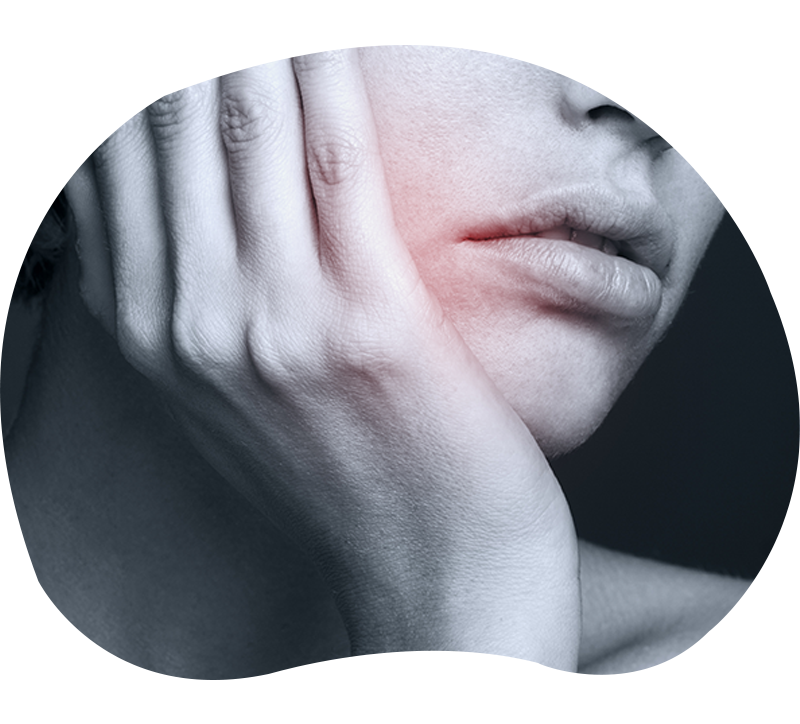
What to do in case of a dental emergency?
Contact the nearest dental center during business hours to make an appointment.
In case of unavailability or closure of the dental office, please refer to the following indications
On-call and emergency dental service
Call 0800 00 0000 to obtain the list of dentists on duty or go to the emergency room of the nearest hospital
The different types of dental emergencies
Dental pain can be the result of several factors. The most known are the traumas: dental fractures, gum infections, dental infections etc.
If a permanent tooth is expelled:
The emergency procedure consists of recovering the tooth, without cleaning it, and preserving it in physiological serum or milk (otherwise preserving it in your own saliva). Re-implantation, if possible, should be done as quickly as possible.
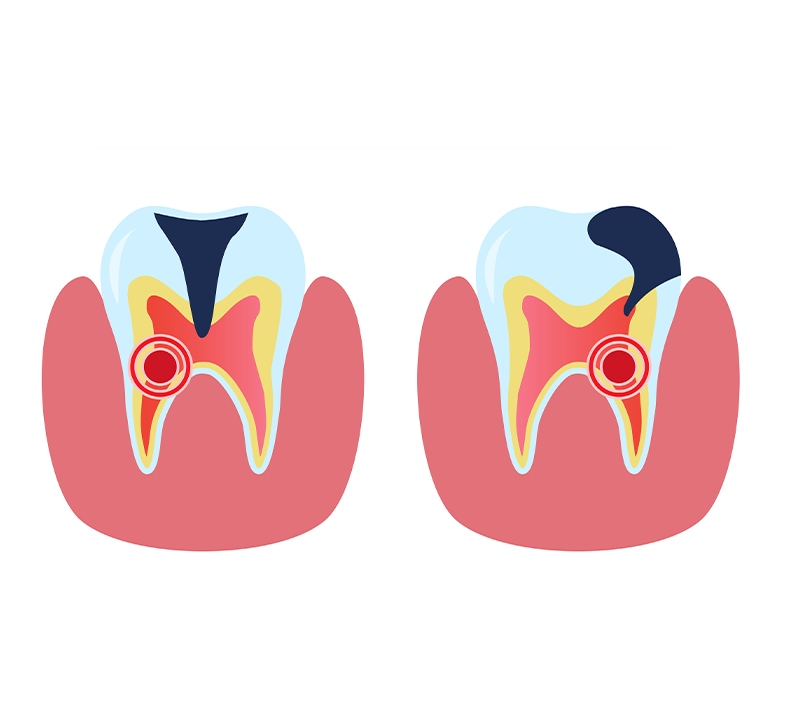
Pulpitis
Pulpitis is the well-known stage of “toothache”. The pain is violent, spontaneous, pulsatile and increases when lying down.
At this stage, only a dentist can help you: contact the office and an appointment will be made with one of our practitioners as soon as possible.
The only possible treatment is then devitalization. If no treatment is carried out at this stage, the pulp will gradually become necrotic, until total necrosis occurs. The pain will then cease, leading to the false belief that everything is back to normal, but the tooth will evolve into an abscess, or even into cellulitis.
Tooth decay
Tooth decay is an infectious disease that can affect a tooth more or less seriously depending on its stage of development. The enamel of the tooth is the first to be affected, in fact, since it covers the tooth, it will be the first visible sign, then a cavity forms in the tooth and the decay spreads in depth.
If the cavity is left untreated, the hole will enlarge and the decay may reach the dentin (layer under the enamel). Pain starts to occur, especially with hot, cold or sweet foods. The decay can then reach the pulp of the tooth and at this level, we talk about toothache. Finally, in the last stage, a dental abscess can appear when the bacteria attack the ligament, the bone or the gum.
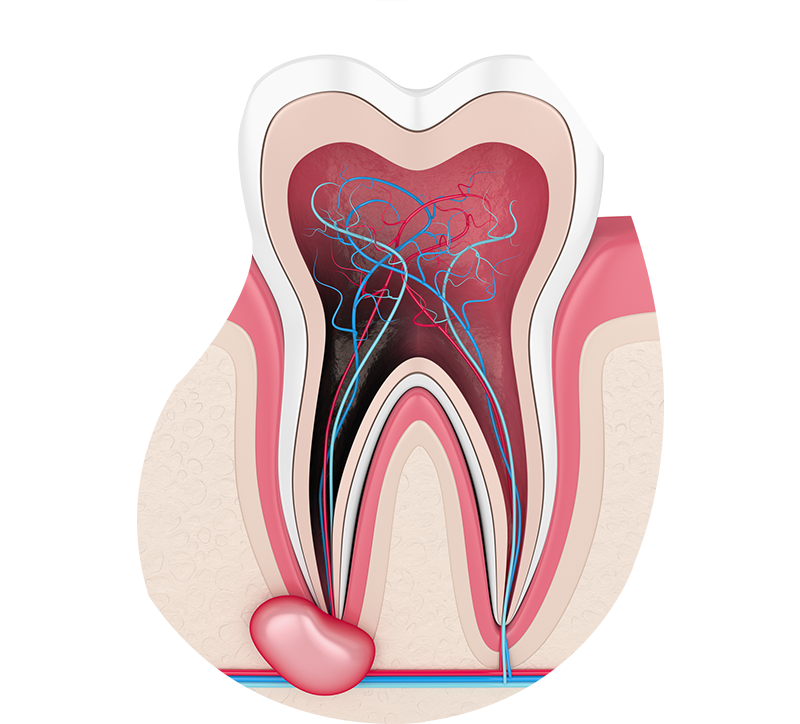
Apical abscess
Periapical abscesses occur at the tip of the tooth root as a result of necrosis of the dental pulp (following a large cavity or trauma). The infection attacks the bone at the root level. It can remain asymptomatic for years (and thus reach a very important dimension) then, spontaneously, become extremely painful.
The abscess causes a sharp pain increased by any pressure/contact on the infected tooth.
Sometimes other local signs may appear (swelling of the mouth or face, discomfort when opening the mouth, contracture of the jaw …) or general ( weakness, fever …).
It is imperative to make an emergency appointment with a dentist because, in addition to the pain which can be very important, the abscess can develop into cellulitis.

Dental cellulitis
Cellulitis is the final stage of a dental infection. It occurs when the infection moves from the bone to the soft tissues of the face. It is characterized by an impressive swelling of the face that occurs within a few hours on the side of the affected tooth. It may be accompanied by more or less severe pain (but often paradoxically less severe than in the earlier stages).
Unfortunately, at this point, the tooth often cannot be saved.
These infections can be extremely dangerous. It is therefore imperative to quickly consult a dentist or go to the emergency room.
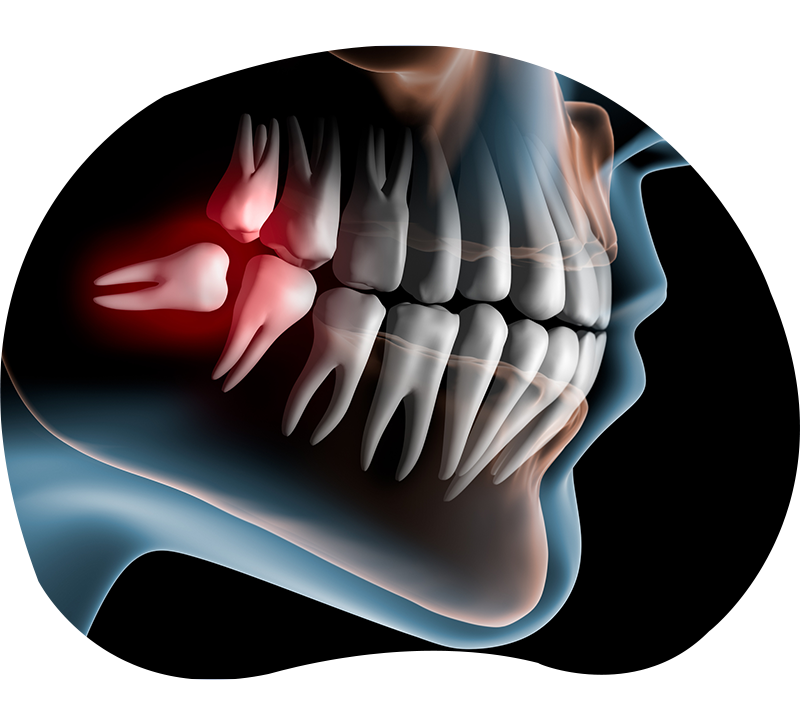
Wisdom teeth
Quite often, a wisdom tooth can be half-emerged, be in an atypical position and offer an entry point for bacteria. Thus, pain, difficulty in chewing, difficulty in opening the mouth (trismus) can occur and lead to an infection. It is then preferable to extract them

Periodontal abscess
A periodontal abscess is a localized infection in the periodontal tissues (gum and alveolar bone). It is an acute exacerbation of a chronic inflammation located in a periodontal pocket. This pocket corresponds to a detachment of the gum from the tooth, related to an inflammatory disease of the gum (periodontitis or gingivitis).
It is imperative to make an emergency appointment with a dentist because, in addition to the pain which can be very important, the abscess can develop into cellulitis.
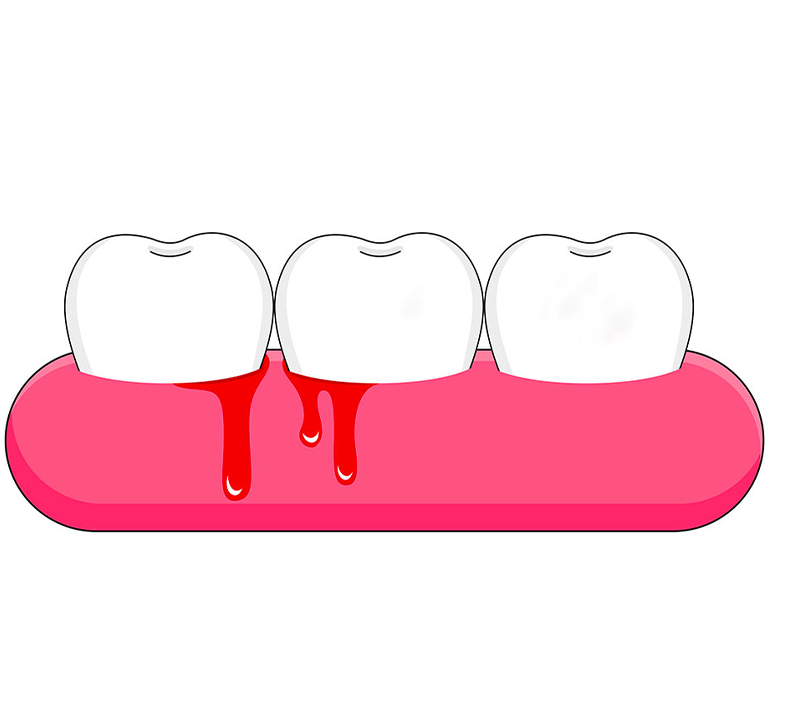
Gingivitis
This pathology is characterized by a violent inflammation of the gums, accompanied by painful areas of ulceration. Brushing becomes impossible and bleeding increases. This fulgurating gingivitis often appears after a phase of weakening of the immune system (immunodepression) following a major stress or a pathology influencing the immune system. Smoking is also an important risk factor. Treatment most often consists of the use of antiseptics combined with antibiotic therapy for a limited period of time to reduce inflammation. Once the inflammation is reduced, periodontal cleaning is performed by scaling and root planing. Blood tests may be recommended to determine the origin of the immunosuppression.
